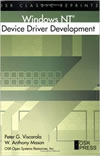All Articles
Accounting
Hotels & Hospitality
Alcohol, Tobacco & Other Drugs
Human Resources
Alternative Dispute Resolution (ADR)
Insurance
Aquatics Safety
Insurance Coverage Analysis
Arms - Guns - Weapons
Intellectual Property
Artificial Intelligence (AI) / Machine Learning (ML)
Investigation & Surveillance
Automotive - Vehicular
Jails - Prisons - Correctional Facilities
Chemical Industry
Land Mapping - Surveying - Zoning
Computer Forensics
Land Use
Computers
Linguistics
Counseling
Mediation
Design
Metallurgy
Digital / Crypto Currency
Nonprofit Organizations
Discovery & Electronic Discovery
OSHA
Electrical - Electrocution
Pain Management
Engines (Combustion - Diesel)
Patents
Expert Witnessing
Pharmaceuticals
Eyewitness Testimony
Plants & Trees
Family Issues
Plastic / Reconstructive / Cosmetic Surgery
Feng Shui
Pools and Spas (Recreational)
Fires & Explosions
Radiology
Food & Beverage
Securities
Foreign Affairs - Geopolitics
Speech-Language Pathology
Forensic Psychiatry
Terrorism - Homeland Security
Healthcare
Workplace Violence
More...

RADIOLOGY-PAGE ARTICLES MAIN PAGE
. Contact Us if you are interested in having your work published on our website and linked to your Profile(s).
All Articles
Accident Investigation & Reconstruction
Gems & Jewelry
Accident Prevention & Safety
Insurance Coverage Analysis
Addiction Issues & Substance Abuse
International Trade
Alcohol, Tobacco & Other Drugs
Investigation & Surveillance
Anger Management & Related Issues
Land Mapping - Surveying - Zoning
Animals
Life Expectancy - Life Care Planning
Appraisal & Valuation
Logistics - Reverse Logistics
Aquatics Safety
Machinery
Architecture
Marine - Maritime
Artificial Intelligence (AI) / Machine Learning (ML)
Marketing
Attorney Fees
Metallurgy
Automotive - Vehicular
Mining
Biokinetics
Obstetrics - Gynecology (OBGYN)
Business Management
Patents
Construction
Pharmaceuticals
Cosmetology: Hair / Makeup
Politics
Crime Scene Investigation
Pools and Spas (Recreational)
Crisis Management
Premises Liability
Dental - Dentistry
Psychology
Design
Recreation & Sports
Digital Forensics
Risk Management
Engineering
Security
Ethics / Ethical Duties
Sexual Abuse - Molestation - Harassment
Family Issues
Terrorism - Homeland Security
Fires & Explosions
Warnings & Labels
More...
Featured Articles
There are no active articles here at this time. Please use the search bar, try another category, or contact us if you would like to contribute an article.
This Article is unavailable. Contact Us
Search articles by title, description, author etc.
Sort Featured Articles
Featured resources
The Privatization of Police in...
by James F. Pastor, PhD, JD
How Attorneys Can Best Utilize Their...
by Vernon M. Neppe MD, PhD, FRSSAf, DFAPA
Windows NT Device Driver Development...
by W. Anthony Mason, et al
Follow us










